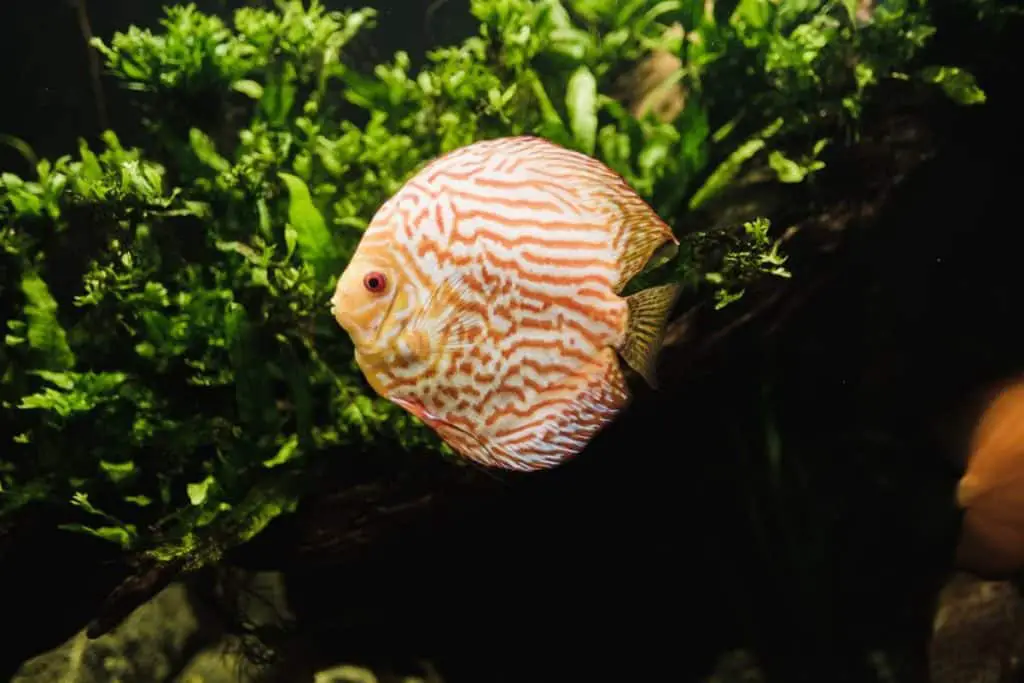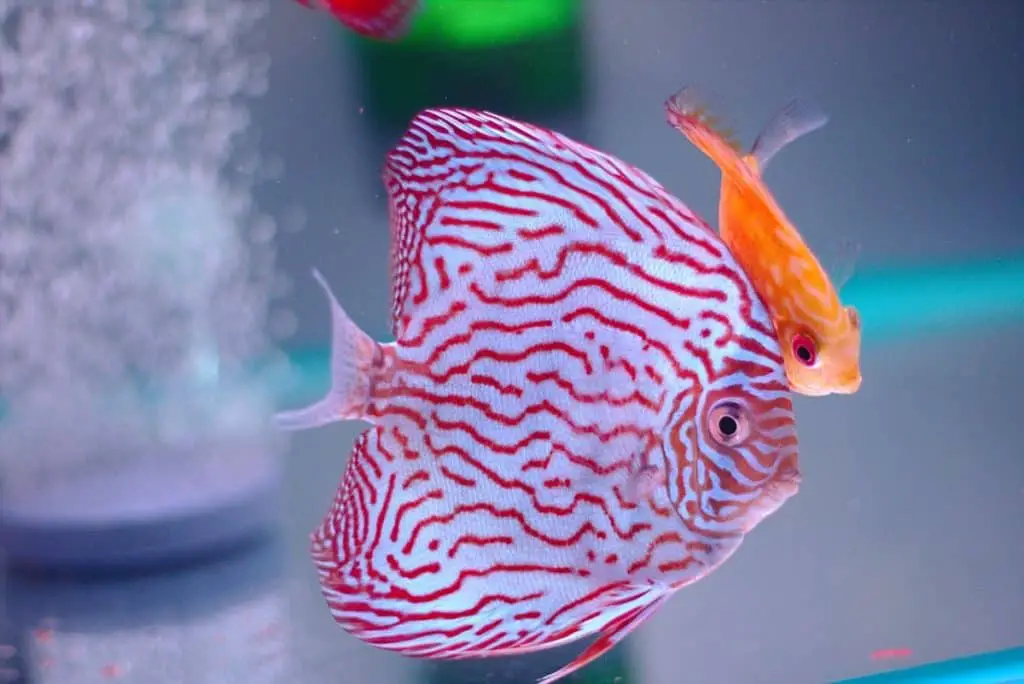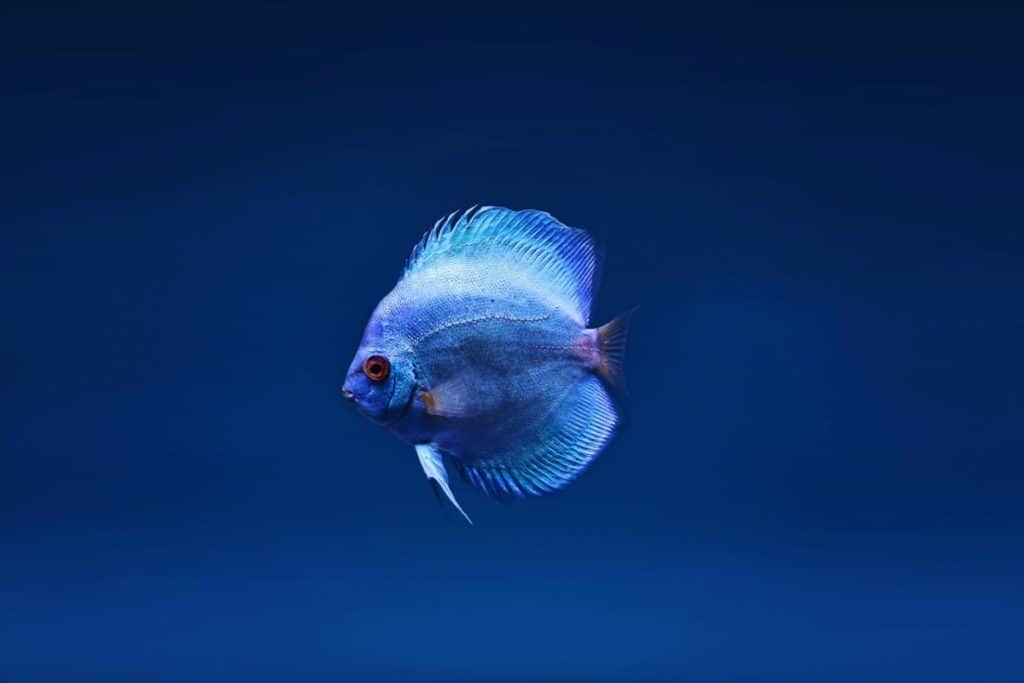
Discus is a fish species that is commonly found in the Amazon river which is located in South America.
They commonly consume small fish species and shrimp which we humans also love to consume.
But can discus fish themselves be eaten by humans or not?
In this article, you’ll find the exact answer to this question and I’ll also give you a few more answers to closely related questions to extend your knowledge even more.
Is a discus edible?
Discus fish are popular aquarium fish.
They are native to the Amazon River in South America, but they are also found in the waters of Africa, Asia, and Europe.
They are colorful fish that can grow up to 12 inches (30 cm) in length.
Discus fish are edible, but they are not commonly consumed fish all over the world because they are not fatty fish.
They are white fish that has a mild flavor and are low in fat.
Discus fish are not as popular as other cichlids among consumers, and many people view them as unappealing to eat.
Does a discus taste good?
This question can be answered in various ways.
Some people might think that the taste of a discus is excellent, while others might not like it as much.
But the outstanding fact is that discus fish are carnivores, and the meat of carnivorous animals, generally, doesn’t taste good to most people.
How do you eat a discus?
Discus fish should be cooked like any other fish.
The first step is to remove all the bones from the fish and also its internal organs.
This can be done by cutting the fish in half and then removing the spine, ribcage, and organs.
Once the bones and organs have been removed, the fish can be cut into smaller pieces and then cooked.
One of the simplest ways to prepare discus is to deep-fry it in oil over medium heat.
You can also bake the discus fish in the oven or even grill it on the barbecue.
Just make sure you don’t overcook it and that you season it with some salt and pepper before cooking.
Should you eat a discus?
The discus fish is a beautiful, brightly colored fish that is popular in the aquarium trade.
While discus fish are popular in the aquarium trade, they are not primarily consumed all over the world because they’re pretty boney and lack a lot of meat.
The taste of discus fish is slightly different, so if you are looking for a new type of fish to eat then you could try them out but remember that you won’t get much edible meat from one discus.

Can a goldfish eat a discus?
In some instances where animals have been known to switch their diets to survive.
If the situation asks for it, which in this case must be severe hunger, then you might see a goldfish going after a discus.
The main reason for this is that the goldfish will take whatever nutrients it can get to survive.
Also, it’s important to remember that goldfish are omnivores which means that they also love to eat meat.
This fact surprises many people who assume that goldfish are exclusively herbivores.
The truth is that goldfish can digest a variety of different food items, making them versatile eaters.
Goldfish and discus can, however, also live together as long as they are correctly fed.
Can a stingray eat a discus?
Stingrays can eat discus fish.
Stingrays are predators that feed on various prey, including fish, crabs, and other invertebrates.
Discus fish are no exception to this rule and can quickly become a meal for a hungry stingray.
The stingray is a large and imposing fish that is commonly found in the Amazon River.
It’s a bottom-feeder that scavenges for food on the riverbed.
Despite the stingray’s inability to eat the discus all at once, you can also be sure that large discus fish will be eaten piece by piece if the discus won’t fit in its mouth in one go.
Will a pleco eat a discus?
Pleco fish have a very interesting diet.
They will, for example, only eat discus fish whenever they’re starving to the point of almost dying.
Therefore, pleco will not eat discus fish whenever they’re fed normally.
They may even help to keep the discus fish population in check.
But, if there is a sudden serious shortage of food, or if the plecos are particularly very hungry then they might result to eating discus fish.
Will an angelfish eat a discus?
Angelfish and discus fish can be companions in a fish tank as the angelfish will usually not eat the discus fish.
The angelfish are generally larger than the discus fish, but they will usually not try to compete for food either if they’re both well-fed.
However, if the angelfish are not getting enough food, then they may go after all the available food.
So, the most important factor to remember when caring for a discus fish in a tank with angelfish companions is to never let either of the fish species starve.
This means that you should always have food available for both fish species and that you should keep a close eye on their eating habits.
Check out the video below if you want to see angelfish and discus fish living in harmony together.
What animals will eat a discus?
The primary predators of discus fish include turtles, birds, and larger fish species.
They are more vulnerable when they are young and have not yet developed their adult coloring.
Besides discus fish being a vulnerable fish species, they’re also known for being cannibalistic at times.
This means that they will not only eat the food that you give them but that they will also eat any other small fish or larvae of their species that happen to swim into their territories.

Will a snail eat the eggs of a discus?
There are many different types of snails, and while some may prefer to eat vegetable matter, others prey on small fish, crustaceans, and the eggs of other mollusks.
Larger snails typically feed on the eggs of discuses as these eggs tend to be decently-sized meals for them.
So, all in all, it can be said that whether a snail decides to eat the egg of a discus will solely depend on the particular snail’s diet, its preferences, and how hungry the snail in question is.
Conclusion
You’ve learned, in this article, that discus fish can indeed be eaten by humans but that they’re not commonly consumed by us.
They’re mainly kept in aquariums for our own eye’s pleasure.
This is the case because they’re very colorful fish and they’re not eaten by us because they’re very low in fat content.
